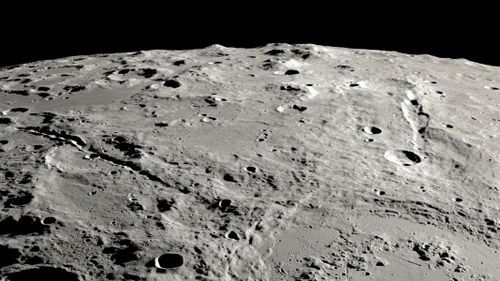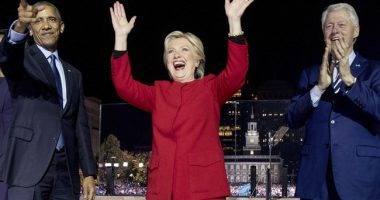That’s good news for scientists and NASA, which is looking to land astronauts at the south pole on the near, Earth-facing side untouched by that impact and containing older rocks in original condition.
US and British scientists used photos and data from NASA’s Lunar Reconnaissance Orbiter to map the area and calculate the path of debris that produced these canyons about 3.8 billion years ago.

They reported their findings on Tuesday (Wednesday AEST) in the journal Nature Communications.
The incoming space rock passed over the lunar south pole before hitting, creating a huge basin and sending streams of boulders hurtling at a speed of nearly one kilometre a second.
The debris landed like missiles, digging out two canyons comparable in size to Arizona’s Grand Canyon in barely 10 minutes.
The latter, by comparison, took millions of years to form.
“This was a very violent, a very dramatic geologic process,” said lead author David Kring of the Lunar and Planetary Institute in Houston.

Kring and his team estimate the asteroid was 25 kilometres across and that the energy needed to create these two canyons would have been more than 130 times that in the world’s current inventory of nuclear weapons.
Most of the ejected debris was thrown in a direction away from the south pole, Kring said.
That means NASA’s targeted exploration zone around the pole mostly on the moon’s near side won’t be buried under debris, keeping older rocks from four billion plus years ago exposed for collection by moonwalkers.
These older rocks can help shed light not only on the moon’s origins, but also Earth’s.
Kring said it’s unclear whether these two canyons are permanently shadowed like some of the craters at the moon’s south pole.
“That is something that we’re clearly going to be reexamining,” he said.
Permanently shadowed areas at the bottom of the moon are thought to hold considerable ice, which could be turned into rocket fuel and drinking water by future moonwalkers.
NASA’s Artemis program, the successor to Apollo, aims to return astronauts to the moon this decade.
The plan is to send astronauts around the moon next year, followed a year or so later by the first lunar touchdown by astronauts since Apollo.







